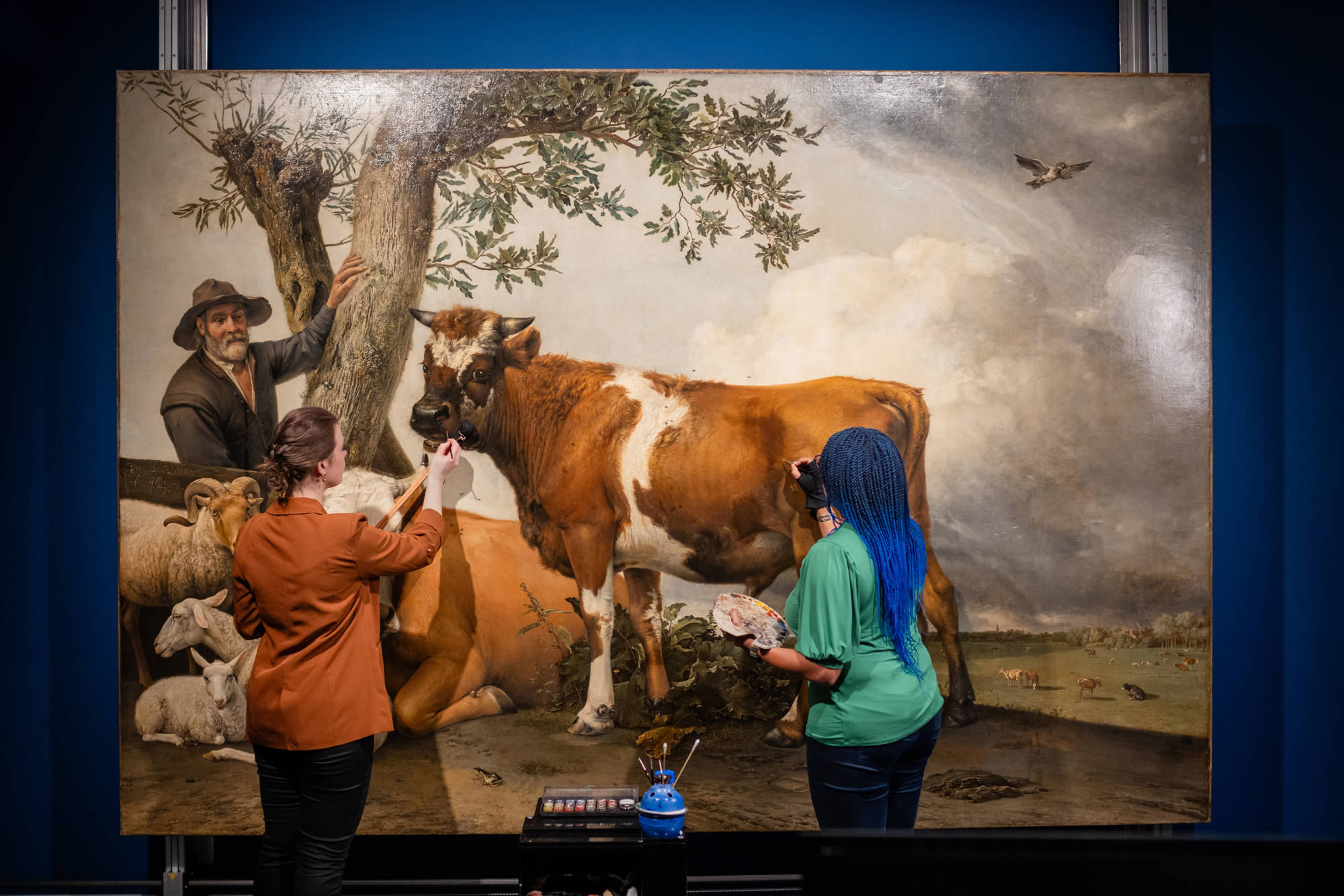
Recent research conducted prior to the start of the conservation of Paulus Potter’s The Bull at the Mauritshuis, has produced several new insights into how the painter worked. We already knew that Potter started working on his huge painting of The Bull in a smaller format, and that he enlarged the canvas during the process. Just what that initial composition looked like and how exactly he enlarged it were the key questions in this first ever investigation of the painting. The research revealed that Potter changed many more aspects of his famous work than we previously thought: the bull itself, the plants and the background. Potter was out to achieve the best result, and it was clearly quite a quest. The research and the conservation of The Bull have been financed by the Dutch family firm Lely, a bequest from Mrs A.D. Bonebakker-van Enter, an anonymous private benefactor, the Debman Foundation and Stichting Retourschip.



